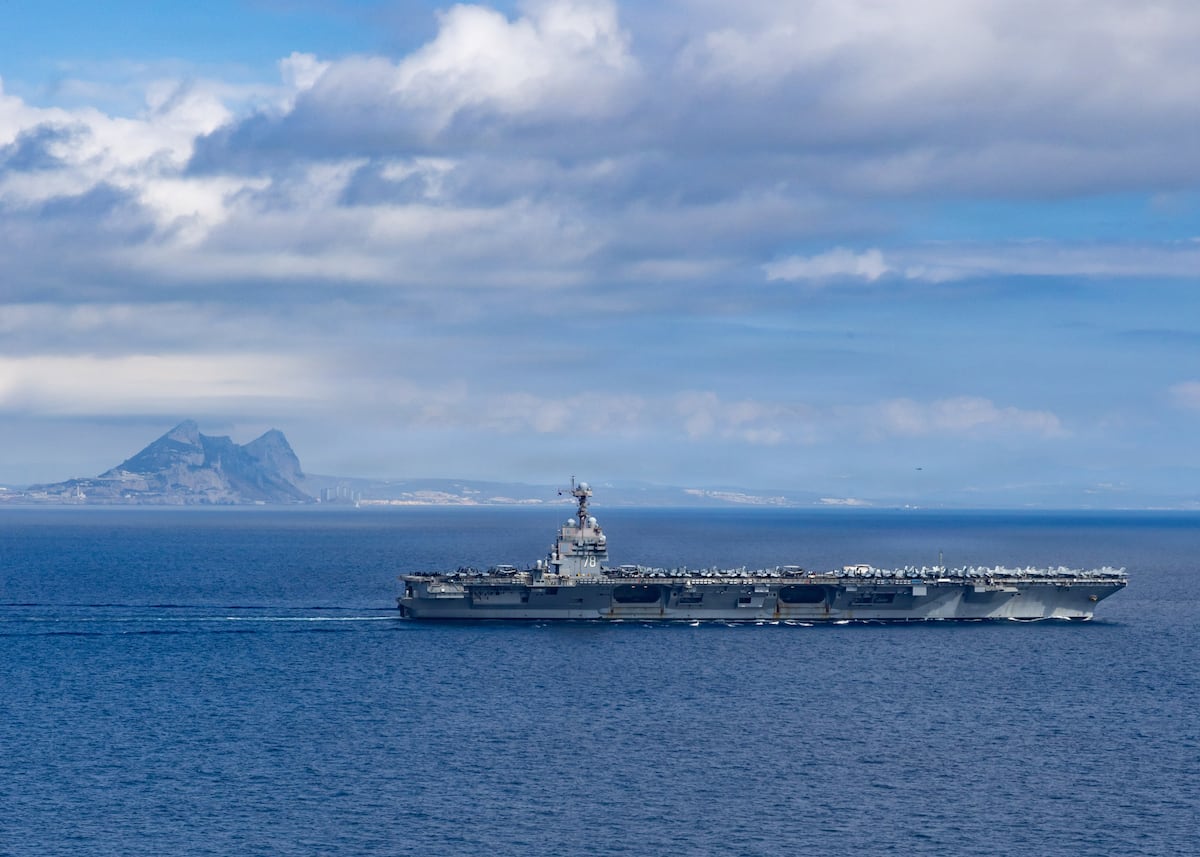The Navy’s largest aircraft carrier entered the U.S. Southern Command area of responsibility Tuesday after setting sail from the Mediterranean on Nov. 4, according to the Navy.
The Pentagon announced in an Oct. 24 X post that the USS Gerald R. Ford and its strike group would be traveling to the region in support of what the Pentagon has referred to as counternarcotics efforts in the area.
“The enhanced U.S. force presence in the USSOUTHCOM AOR will bolster U.S. capacity to detect, monitor, and disrupt illicit actors and activities that compromise the safety and prosperity of the United States homeland and our security in the Western Hemisphere,” said Chief Pentagon Spokesperson Sean Parnell, according to the release.
The Ford joins eight other Navy vessels in the USSOUTHCOM AOR, including the USS Iwo Jima, USS Fort Lauderdale, USS San Antonio, USS Lake Erie, USS Jason Dunham, USS Gravely, USS Stockdale and USS Wichita.
There are roughly 6,000 personnel stationed aboard the eight vessels.
The Ford itself hosts 4,000 sailors, dozens of tactical aircraft, the Iwo Jima Amphibious Ready Group and an embarked Marine Expeditionary Unit under a Joint Task Force.
RELATED
The Gerald R. Ford Carrier Strike Group comes equipped with nine embarked squadrons of Carrier Air Wing Eight, guided-missile destroyers USS Bainbridge and USS Mahan and the missile defense command ship USS Winston S. Churchill.
“Through unwavering commitment and the precise use of our forces, we stand ready to combat the transnational threats that seek to destabilize our region,” said SOUTHCOM Cmdr. Adm. Alvin Holsey, according to the release.
Defense Secretary Pete Hegseth announced in an Oct. 16 social media post that Holsey would retire at the end of the year.
Though no reasoning was provided in the post, The New York Times reported that Holsey and Hegseth clashed over the U.S. military’s objective in Central and South America and the military strikes against alleged drug-carrying vessels in the region.
Holsey has supervised the U.S. military strikes since they began in September.
The Trump administration has disclosed 19 strikes so far, killing at least 75 people aboard the targeted vessels.
Riley Ceder is a reporter at Military Times, where he covers breaking news, criminal justice, investigations, and cyber. He previously worked as an investigative practicum student at The Washington Post, where he contributed to the Abused by the Badge investigation.
Read the full article here








